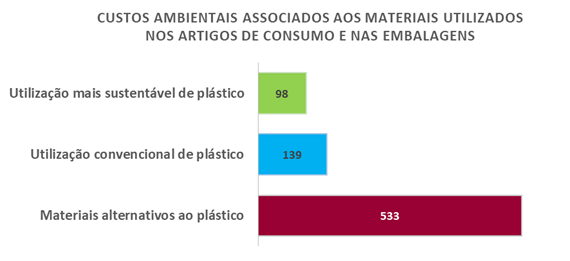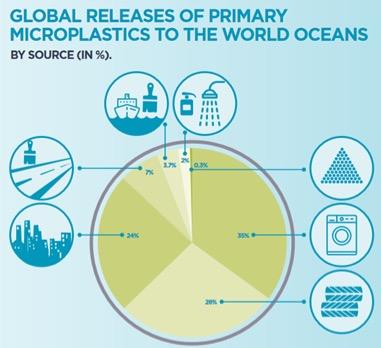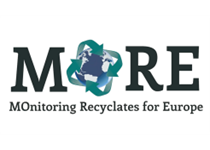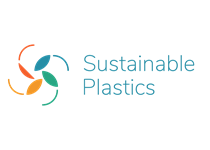Plastics as allies of resource efficiency
Plastic, as a versatile material, has revolutionised our consumer society in the most diverse areas, such as packaging, transport, health, electronics and construction, among many others.
Due to their versatility and numerous advantages, plastic products offer immense possibilities for saving resources, contributing to minimising environmental impacts and costs worldwide.

Fonte: Trucost Plastics and Sustainability: A Valuation of Environmental Benefits,
Costs and Opportunities for Continuous Improvement, July 2016. Costs shown in US Billion dollars.
Several studies show that the environmental cost is nearly four times higher if plastics were replaced with alternative materials, with the consequent increase of energy and water consumption, greenhouse gas emissions, the global weight of urban solid waste, etc ...

Fonte: The impact of plastic packaging on life cycle energy consumption and greenhouse gas
emissions in Europe: Executive summary July 2011, Bernd Brandt and Harald Pilz.
Indeed, plastics are excellent materials when it comes to resource efficiency, enabling water, CO2 emissions and energy savings.
For example:
- The implementation of micro-irrigation (micro-watering or drip irrigation) in the agricultural sector enables water savings of 30% to 60 % compared to traditional methods.
- Plastics also have excellent thermal insulation properties, which greatly helps in improving energy efficiency, reducing not only energy consumption costs but also CO2 emissions.
- The use of plastics in the mobility and transport sector allows for lower fuel consumption. The environmental benefits are evident: less fuel consumed means less pollutant emissions.
- On average, a car is made up of 15 % plastic components, which saves 750 litres of fuel over 150 000 km.
- An aeroplane’s plastic components significantly reduce its weight, allowing fuel savings of around 20 %.
Plastics are extremely valuable materials, so they maynot be abandoned and unused. The industry will continue to strive to innovate and find the best available technology that allows the greatest possible use of plastic waste, which has always been seen as a resource, returning it to the market in the form of a secondary raw material with added value and the quality required for current and future applications, contributing decisively to the principles of circular economy and sustainability.
Plastic prevents food waste
It is estimated that one third of food worldwide is lost or wasted annually. In Portugal, this waste can amount to 1 million tonnes per year.
When food is wasted, we lose valuable resources including water, land, energy and work.
Food waste is one of the main problems facing our society, and it gains even more importance given its contribution to climate change as a result of the production and emission of greenhouse gases.
In addition, it is recognised that food production must increase by 70 % over the next 30 years in order to keep pace with global population growth.
Plastics also play a decisive role in this area, particularly in food packaging, contributing decisively to the minimisation of food waste through the protection they provide to food, protecting it from any microbial contamination, reducing spoilage and extending foodstuffs’ shelf life.
Are plastic pellets the main source of Microplastics in the environment?
Much has been said on the subject of microplastics (plastic particles less than 5 mm in length), especially their contribution to marine pollution. However, are plastic pellets (raw material used in the production of plastic articles) the main source of microplastics in the environment?
Contrary to what is often conveyed by public opinion, the main sources of microplastics in marine environments are textile fibres and rubber particles from car tyres, which represent 35 % and 28% respectively. Plastic pellets contribute only 0.3 % to this problem, as illustrated in the following figure:

Source: International Union for Conservation of Nature (www.iucn.org)
Regardless of their representativeness, we can all agree that without a doubt these particles should not end up in the environment. The plastics industry is committed to preventing the release of pellets into the environment. Proof of this is the implementation of concrete actions which are part of international initiatives, such as the Operation Clean Sweep programme, which aims to prevent any pellets from leaking into the environment.







